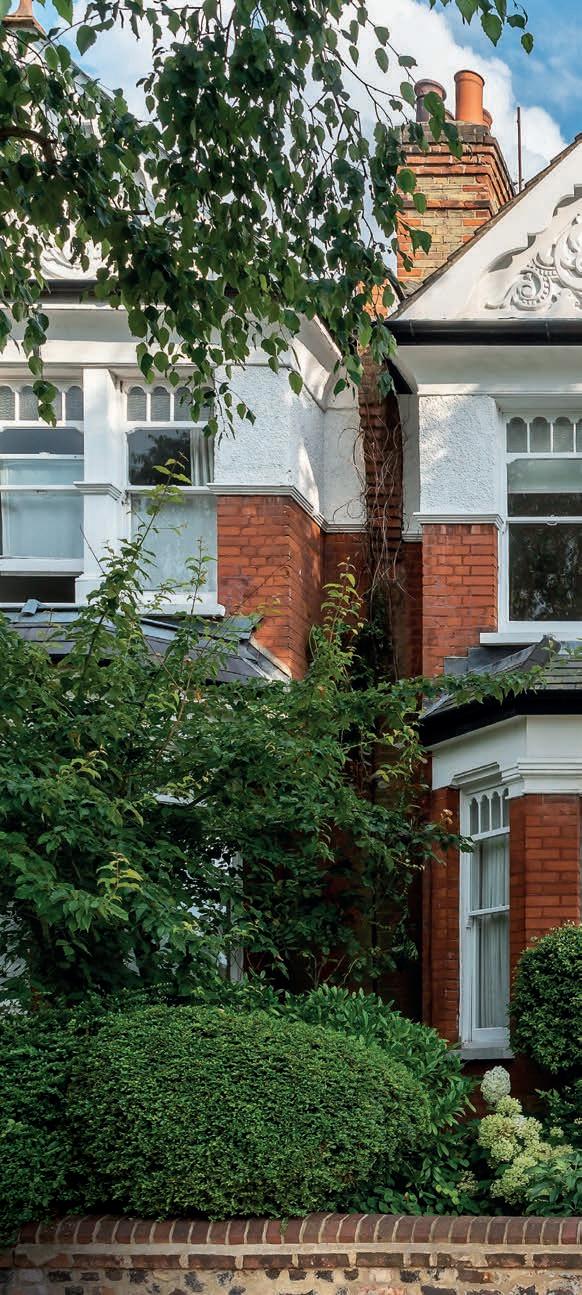
7 minute read
REIGN SUPREME
Chimneys often sited halfway down the slope of the roof so they stand directly above the fireplace.
Often larger, airier and more ornate than their Victorian predecessors, homes built in London during the reign of Edward VII are being rediscovered
Advertisement
That wide staircase, airy hallway and decorative porch of the attractive Victorian house you’ve got your eye on are all clues that it’s probably not Victorian at all, but Edwardian. Built at the turn of the last century, these properties are sturdy, stylish and eclectic – and just a little bit misunderstood.
Despite only having a nine-year reign, Edward VII lent his name to an era that resulted in thousands of grand homes springing up in the capital, which are often confused with those built during the Victorian period that stretched for most of the 19th century.
Edward, who was nicknamed ‘Bertie’, was the second child and eldest son of Queen Victoria and Prince Albert, and who became king in 1901 and died in 1910, although the Edwardian period is accepted to have lasted up to the start of World War One in 1914.
The Prince of Wales was one of the most popular and highly intelligent royals who enjoyed sport, travelling and architecture, and helped restore the monarchy’s popularity. During his reign, Britain experienced big cultural and political shifts; the Liberals returned to
Sash windows often with the upper section divided with glazing bars and a plain lower one.
Dukes Avenue, Muswell Hill N10 £1,825,000 KFH Muswell Hill 020 3993 4558 muswellhill.sales@k .co.uk
Steep pitched roofs with gable ends and dormer windows featuring little-pointed barge-boards.
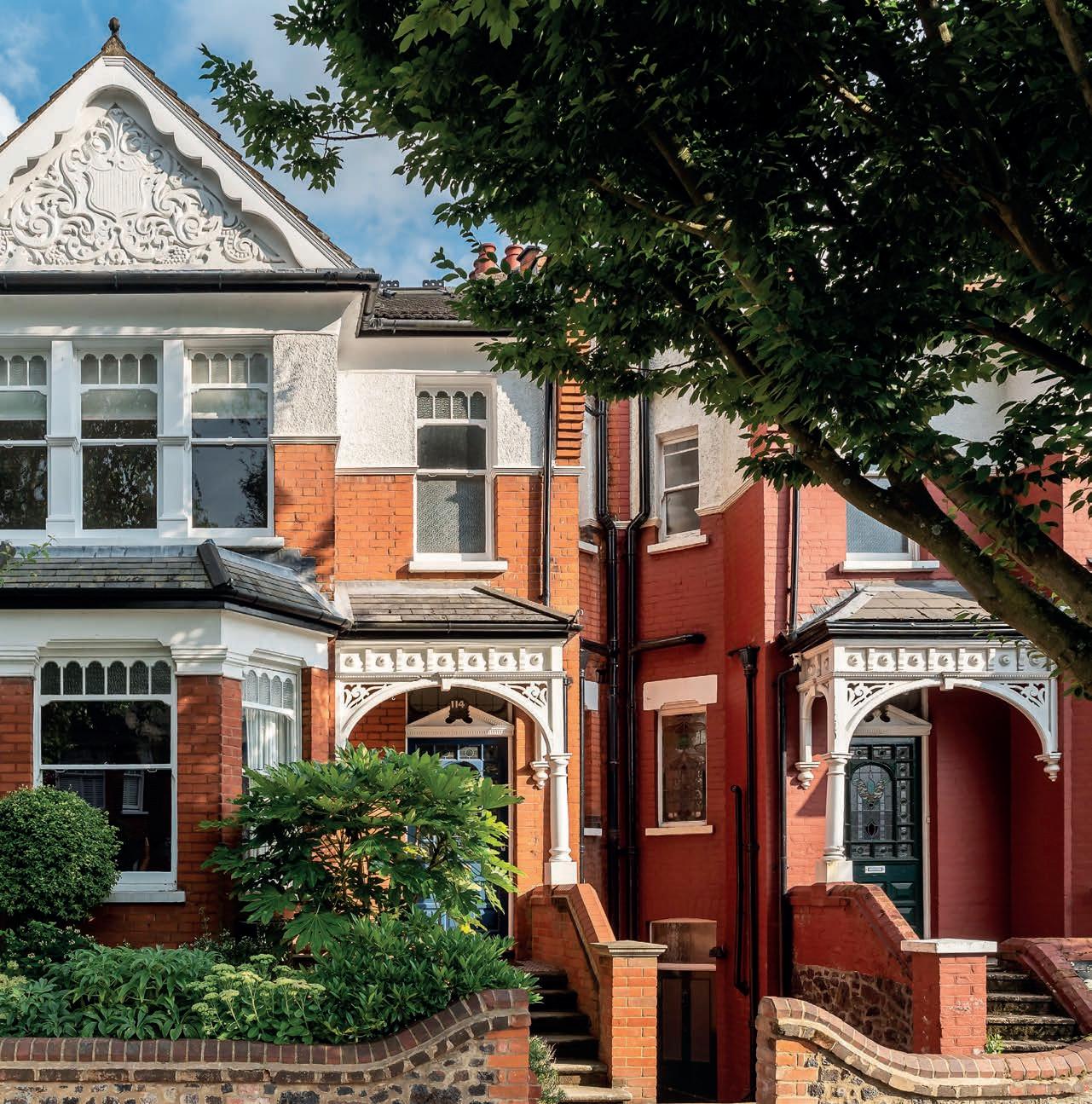
Mock timber frame patterns, hanging tiles, a coat of pebbledash, or a plain render with patterns pressed into it on the upper storey.
Porches and balconies edged with timber railings and fretwork patterns, now usually painted white.
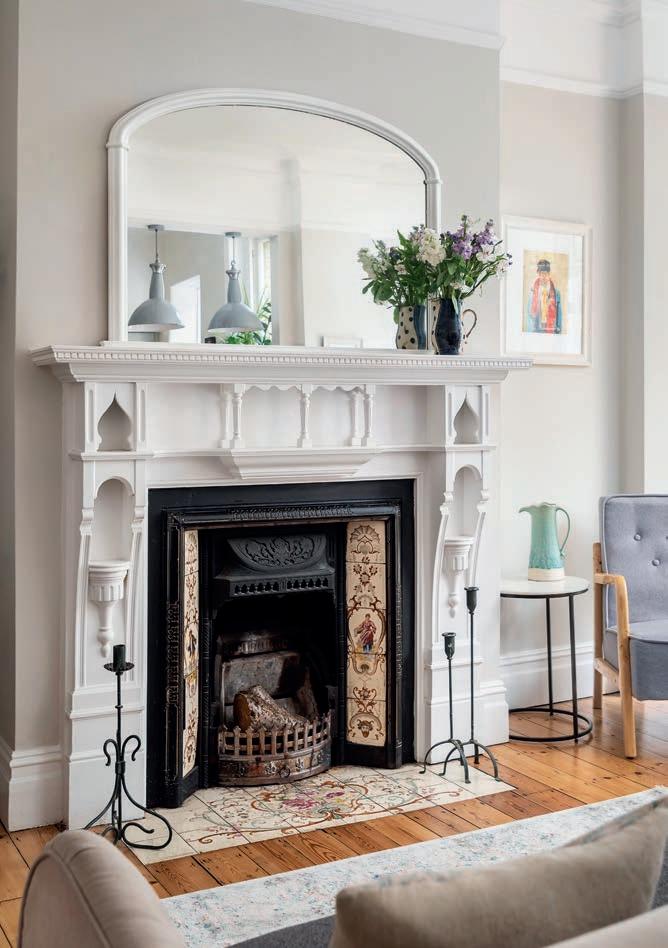
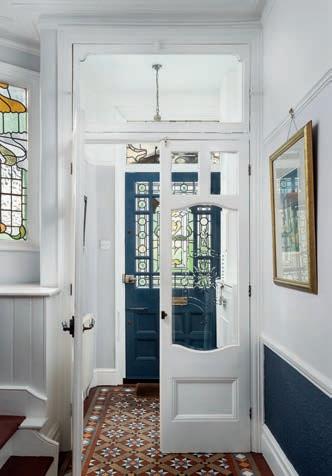
Measures taken to reduce the problem of rising damp such as bitumen or slate damp proof courses, bands of engineering bricks used as a barrier and a raised ground floor so air bricks could be fitted.
Ceramic tiles often in black and white used to decorate the pathway up to the house and the floor of the entrance hall.
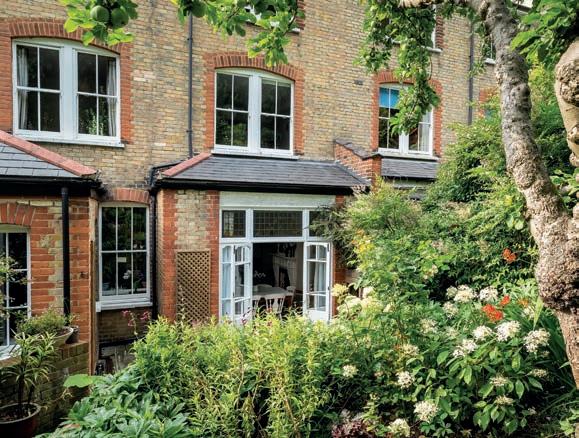
power in 1906 and targeted those sections of society that had largely been excluded, such as labourers, servants, and the industrial working class.
But, while they provided a starting point for the development of a state-funded support network, many of these reforms were criticised for not going far enough. American author Samuel Hynes once described the Edwardian era as a “leisurely time when women wore picture hats and did not vote, when the rich were not ashamed to live conspicuously, and the sun really never set on the British flag”.
A powerful and a uent Britain had a voracious need for more housing, explains Victorian Society Director Joe O’Donnell, who says that although there may be far fewer Edwardian properties than their Victorian counterparts, London saw huge expansion at the turn of the last century – becoming the biggest city in the world – as the country built up its armies and industry pre-World War One.
The rapidly increasing population and growth of the railway lines gave rise to the suburbs where Edwardians could build their homes often on larger, leafier plots of land. In the quest for space, houses appeared in great numbers on the edge of the capital, meaning that Edwardian properties are now typically found in Muswell Hill, Hampstead, Greenwich, Hackney, Dulwich, Blackheath and Richmond.
“There was no sudden or big change in style from Victorian houses, it was more like an evolution,” O’Donnell adds, “but they were the apex of traditional building with all the years of development leading up to a conclusion.”
During the Edwardian era, despite the growth of the wealthier middle class, there was less demand for servants, which led to fewer floors in houses – more typically two rather than the common three in Victorian times – while toilets were more likely to be built internally for the first time. (As modern homebuyers have discovered, unlike Victorian properties, there’s no need to convert a bedroom for the purpose.)
In contrast to the smaller, darker Victorian homes, Edwardian houses were more squat, wider and roomy, so there was often more space for a larger hall, wide staircase and more windows, while rooms were also more spacious and airy, often finished with decorative

corbels and cornicing. With more space and an everincreasing desire for privacy at that time, it was common for Edwardian properties to have a front garden and to be set back from the pavement.
“The majority of houses built from the 1890s through to the outbreak of World War One in 1914 used bricks that were dense and durable, the timber was of a high quality, and windows and doors, which with a bit of maintenance, can last for centuries,” says historical architecture author Trevor Yorke. “Speculative builders then applied many of their features onto the mass market of semis and terraces.”
Two key styles to emerge from Edwardian architecture were mock Tudor, also known as Tudorbethan, and Arts and
Very high ceilings, originally with a picture rail, designed as outward displays of wealth.
Crafts. Both used simplistic, rustic approaches that paid homage to nature and incorporated locally found materials in retaliation to mass production in the Victorian age.
It meant there was a fashion to half-clad the property exterior in timber or to sub-divide windows into smaller square panes. Affordable glass made larger bay windows possible and there was an increased use of dramatically coloured stained-glass. Industrialisation also meant it was easier to produce features such as the wooden fretwork on porches.
European architecture also influenced buildings including the neo-Baroque architecture first discovered in Italy in the 17th century, resulting in sash windows, columns and pilasters. In Edwardian buildings, this translated to small paned leaded windows, magpie-work and rustic bricks.
But Jacobean details were sometimes used such as gargoyles, heraldic devices, mullioned windows, studded doors and Dutch gables, while the truly modern Edwardians even included Art Nouveau influences in fireplaces, light fittings, stained glass and door furniture in their houses.
Tall and thin houses built along relatively straight streets, part of Edwardians’ desire for simplicity of design.

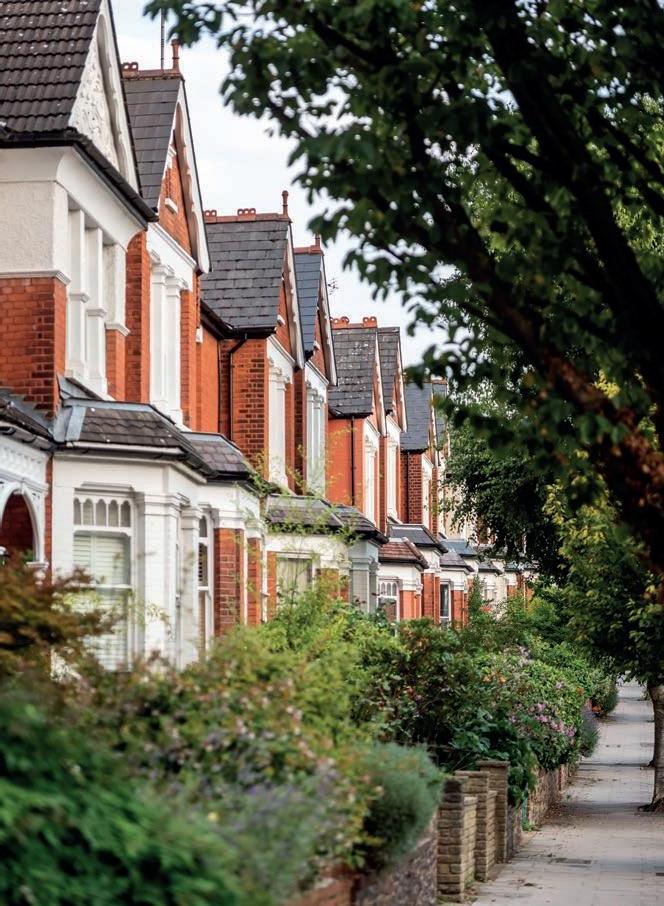
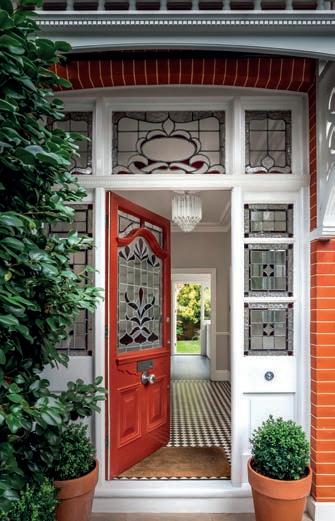
Front doors typically with the upper two-thirds glazed, often with coloured glass or a series of small arched openings.
On the market
Claverley Grove, Finchley N3 OIEO £900,000
A flawless three double bedroom Edwardian house that enhances the period features, complemented by modern fixtures and fittings.
KFH Finchley 020 3993 8109 finchley.sales@k .co.uk
Hillcrest Road, Ealing Common W3 £1,350,000
This is a bright and airy five bedroom semi-detached home full of character. Stand out features include high ceilings and period fireplaces.
KFH Acton 020 3993 7431 acton.sales@k .co.uk
Ribblesdale Road, Furzedown SW16 £500,000
This three-bedroom period conversion offers 696sqft of well arranged accommodation, including an open plan kitchen living area with bay windows.
KFH Tooting 020 3993 0920 tooting.sales@k .co.uk
Spacious, solidly-built and with attractive period details, these homes are often in fantastic locations and offer practical period living for buyers seeking style with substance, says KFH Sales Director for South East London, Julian Peak. “The Edwardian period lasted just nine years and given the limited number of properties built during this period with the perfect balance of architectural flamboyance and practical family living, they are highly sought after and often hidden gems,” he says.
Peak says there are huge swathes of properties in London that are larger, more practical and opulent than Victorian properties, particularly Victorian cottages, but believes that along with their style, their value isn’t always understood either. “It’s debatable whether they can currently command a higher price as both the owner and the agent – and even the surveyor – might not always understand the value; they might just stick ‘built in 1900’ on the survey,” he explains.
“I believe Edwardian properties should carry a premium and from a sales point of view we have an obligation to unlock that,” he says on KFH's approach to selling Edwardian homes. “Our job is to explain the properties’ stories to buyers.”
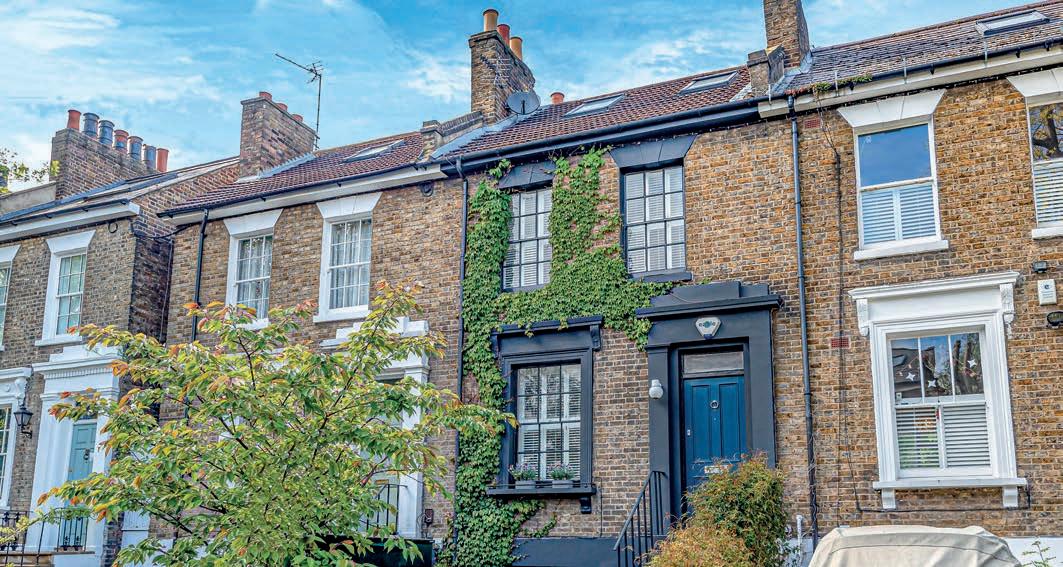

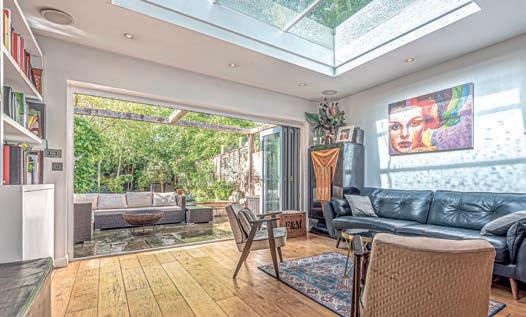
Choumert Road, Peckham SE15
£1,500,000
This four bedroom Victorian town house is presented over four oors with a perfect blend of period charm and contemporary features.
Four bedrooms | Three bathrooms | Victorian terrace | 76ft rear garden Garden room | Belham school catchment | EPC Rating E | Freehold










